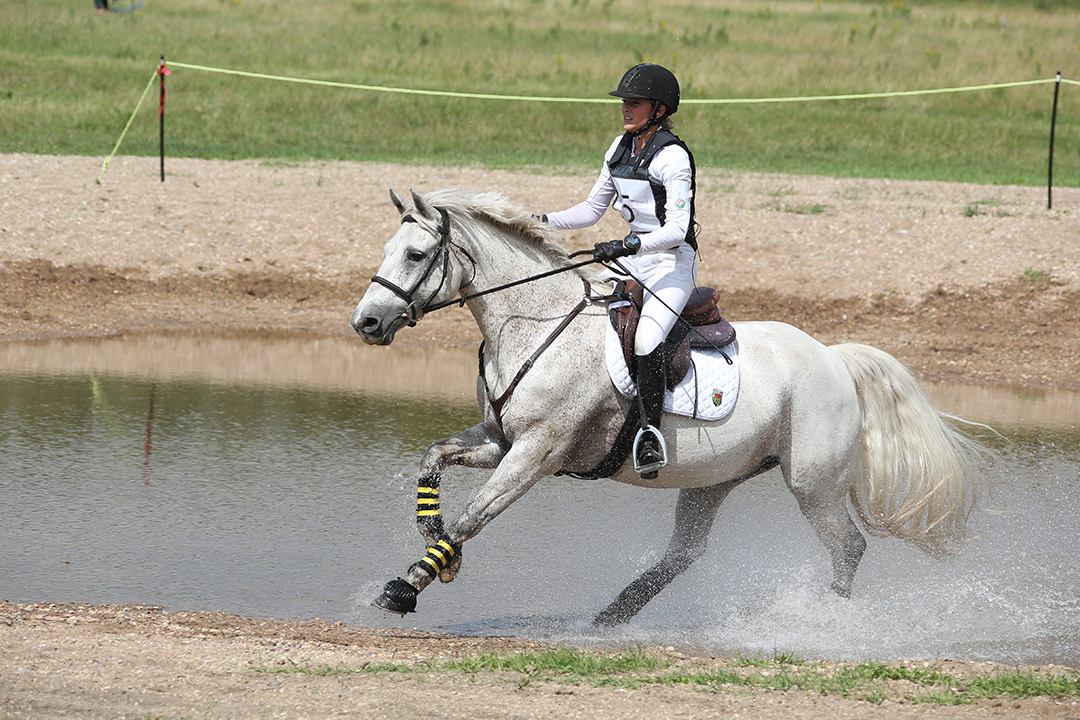
How well do you know your horse's heart?
In March 2021, Dr. Nicole van der Vossen gave a presentation on equine cardiology as part of the WCVM’s EquineED Talks — an online series of equine health sessions for horse owners organized by the regional veterinary college.
By Jessica ColbyVan der Vossen is a large animal internal medicine resident in the Western College of Veterinary Medicine’s (WCVM) Department of Large Animal Clinical Sciences. She’s also a Master of Science (MSc) student whose research project focuses on a comparison of two therapies for congestive heart failure in horses.
Here are some highlights from van der Vossen’s presentation, which is also available online.
Quick facts
A horse’s average resting heart rate is anywhere from 24 to 40 beats per minute (bpm) while it can reach 240 bpm when a horse is giving its maximum effort. On average, a horse’s heart can weigh anywhere from about 7.7 pounds to 11 pounds — between 0.6 and one per cent of their overall body weight.
Just like a human heart, a horse’s heart has four chambers: a left and right atrium and a left and right ventricle. The equine heart also contains four valves (tricuspid, mitral, pulmonary and aortic) and four vessels (vena cava, pulmonary artery, pulmonary veins and aorta).
Deoxygenated blood enters the heart through the right atrium to the right ventricle and up and out of the heart to the lungs through the pulmonary artery. Once the blood has been oxygenated in the lungs, it comes back to the heart through the pulmonary veins. From there it is transported through the left atrium, the left ventricle and out to the rest of the body through the aorta.
Cardiac diseases
Valvular diseases are abnormalities and leaks in any of the four heart valves. The most common valvular disease is of the aortic valve, a progressive condition called aortic regurgitation, which occurs between the left ventricle and the aorta.
“If the valve is diseased, you will hear a murmur,” says van der Vossen. “It means that the valve will allow a leak of the blood backwards to the direction it should be going in.”
Aortic regurgitation causes the heart to pump faster due to the failing valve. Eventually, the heart may become too tired and stop pumping all together (called myocardial failure), which leads to death.
These valvular diseases are often a result of aging valves in middle-aged riding horses that are male. In humans and small animals, valvular diseases can be fixed by simply replacing the affected valve — open heart surgery cannot be performed on horses.
Arrythmias are simply abnormal heartbeats. Sometimes, these abnormalities disappear during exercise. The most common arrhythmia, which occurs in older animals and large-sized horses (such as draft breeds), is atrial fibrillation. This means that the heart’s atria don’t fully contract — instead, they just “tremble.” The good news is that atrial fibrillation is medically and surgically treatable. However, there are cases where horses can relapse into atrial fibrillation.
“Most pathological arrhythmias are related to an abnormality at the level of the heart muscle where the conduction is not going the way it should be going,” says van der Vossen.
Congenital conditions develop from an error — either genetic or random — during the equine fetus’s cardiac development. The most common defect is the ventricular septum defect, which is a hole between the heart’s two ventricles.
Cardiac emergencies
It’s important to know when you should contact your veterinarian. If your horse is experiencing any of the following symptoms, call for help:
- difficulty exercising (increased tiredness, unwillingness to work or an extended recovery time)
- respiratory issues (coughing or nasal discharge)
- increased pulse
- abnormal heartbeat
“Symptoms of cardiac disease are quite vague,” says van der Vossen. “If you have any doubts, it would be better to ask your vet to come and check them [your horse] rather than wait.”
By the time a horse is presenting clinical signs of a cardiac condition, the horse has been living with the condition for a while. The horse’s heart has just been compensating for itself by beating harder or faster, says van der Vossen.
A foal has a resting heart rate of 50 to 70 bpm — much faster than an adult animal. If your foal is showing symptoms of heart failure, the condition is likely one that the foal was born with. In these cases, don’t wait to call your veterinarian for assistance. Call your veterinarian immediately if your foal is showing the following symptoms:
- not thriving
- becomes exhausted quickly
- has breathing issues
- has an abnormal heartbeat
Diagnosis and treatment
Veterinarians will perform a combination of tests on a horse suspected to have cardiac problems. They will listen to the horse’s heart (cardiac auscultation) and conduct an electrocardiogram (recording of the heart’s electric patterns) as well as an exercise test. If they have access to necessary technology, clinicians can also perform an echocardiogram (an ultrasound exam of the horse’s heart) to evaluate how well the organ is pumping blood.
Unfortunately, open heart surgery cannot be performed to repair these heart conditions in affected horses. For veterinarians and specialists, the only treatment option available is to manage these conditions with appropriate medications.
Visit vmc.usask.ca (click “Animal Care”) to access more horse health information — including online recordings of previous EquineED Talks.
Jessica Colby of Montmartre, Sask., is a University of Regina journalism student. She worked at the WCVM as a summer research communications intern in 2021.
